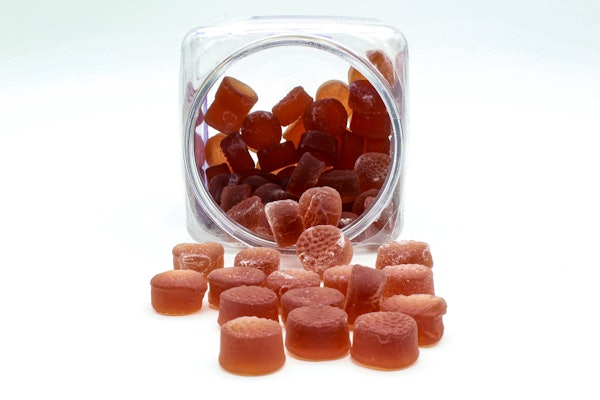
It was 2007 when the FDA Amendments Act was made law, in which Congress ordered FDA to set about making a unique identification system for medical devices. It's a key step in allowing FDA to thoroughly monitor safety of devices after they are in the market.
This is a bigger and more complex prospect than might at first appear, which is no doubt one reason FDA continues to take its time working up the program. The agency has already studied various approaches, started drafting the rules, and held public workshops, to get public input on how best to do this, most recently in September.
Once in place, the system will require device labels to have the identifier, and will require the identifier to stay with the device through the device's distribution and use. Provisions will be made for some devices to have the identifier someplace other than the label, and for some exemptions.
Once device labels feature these unique identifying codes, then FDA will maintain a database of identifying information of devices actually out in the market, though not patient information. Hospitals and other healthcare facilities are going to be central to full implementation of this system, so FDA is asking for their input as part of the process.
FDA's director for devices and radiological health, Dr. Jeff Shuren, told the September workshop that the system would ultimately incorporate unique identification information into health-related databases, including individual patients' health records, which will have a "host of benefits--including post-market surveillance, more efficient device recalls, better reporting and understanding of device related adverse events and product problems, better device-identification registries, and more robust data collection from clinical practice."
But wait, there's more. Shuren says, "There are also a number of other benefits, including improvements in tracking and tracing, supply chain security, identifying devices for disaster, terror preparation, and device shortages, anti-counterfeiting and diversion, and reducing medical errors."
Shuren talks in terms of "harnessing" the available data to help evaluate product safety and benefits. By contrast, says Shuren, drugs are currently identified with some specificity, via NDC numbers, which makes it easier to evaluate their safety and effectiveness.
The proposed codes will be unique and uniform and will include a lot or serial number if FDA requires it.
The long road to implementing this requirement is still not near its end. FDA has scoped out the future developments this way: The proposed rule is expected this year, then the final rule might be in place a year after that, and Class III devices would need to have unique identifiers probably a year later, two years after that for implementation with Class II products, and Class I two years after that.
Watch for the proposed regulation by year-end. It will answer a lot of questions about the specifics of the planned program and its effects on your business. This much is already clear about this labeling requirement: When it comes to creating useful information, and aiding with track and trace, safety, counterfeit prevention and many other goals, it's packaging, or in this case labeling, to the rescue again.
This is a bigger and more complex prospect than might at first appear, which is no doubt one reason FDA continues to take its time working up the program. The agency has already studied various approaches, started drafting the rules, and held public workshops, to get public input on how best to do this, most recently in September.
Once in place, the system will require device labels to have the identifier, and will require the identifier to stay with the device through the device's distribution and use. Provisions will be made for some devices to have the identifier someplace other than the label, and for some exemptions.
Once device labels feature these unique identifying codes, then FDA will maintain a database of identifying information of devices actually out in the market, though not patient information. Hospitals and other healthcare facilities are going to be central to full implementation of this system, so FDA is asking for their input as part of the process.
FDA's director for devices and radiological health, Dr. Jeff Shuren, told the September workshop that the system would ultimately incorporate unique identification information into health-related databases, including individual patients' health records, which will have a "host of benefits--including post-market surveillance, more efficient device recalls, better reporting and understanding of device related adverse events and product problems, better device-identification registries, and more robust data collection from clinical practice."
But wait, there's more. Shuren says, "There are also a number of other benefits, including improvements in tracking and tracing, supply chain security, identifying devices for disaster, terror preparation, and device shortages, anti-counterfeiting and diversion, and reducing medical errors."
Shuren talks in terms of "harnessing" the available data to help evaluate product safety and benefits. By contrast, says Shuren, drugs are currently identified with some specificity, via NDC numbers, which makes it easier to evaluate their safety and effectiveness.
The proposed codes will be unique and uniform and will include a lot or serial number if FDA requires it.
The long road to implementing this requirement is still not near its end. FDA has scoped out the future developments this way: The proposed rule is expected this year, then the final rule might be in place a year after that, and Class III devices would need to have unique identifiers probably a year later, two years after that for implementation with Class II products, and Class I two years after that.
Watch for the proposed regulation by year-end. It will answer a lot of questions about the specifics of the planned program and its effects on your business. This much is already clear about this labeling requirement: When it comes to creating useful information, and aiding with track and trace, safety, counterfeit prevention and many other goals, it's packaging, or in this case labeling, to the rescue again.



















